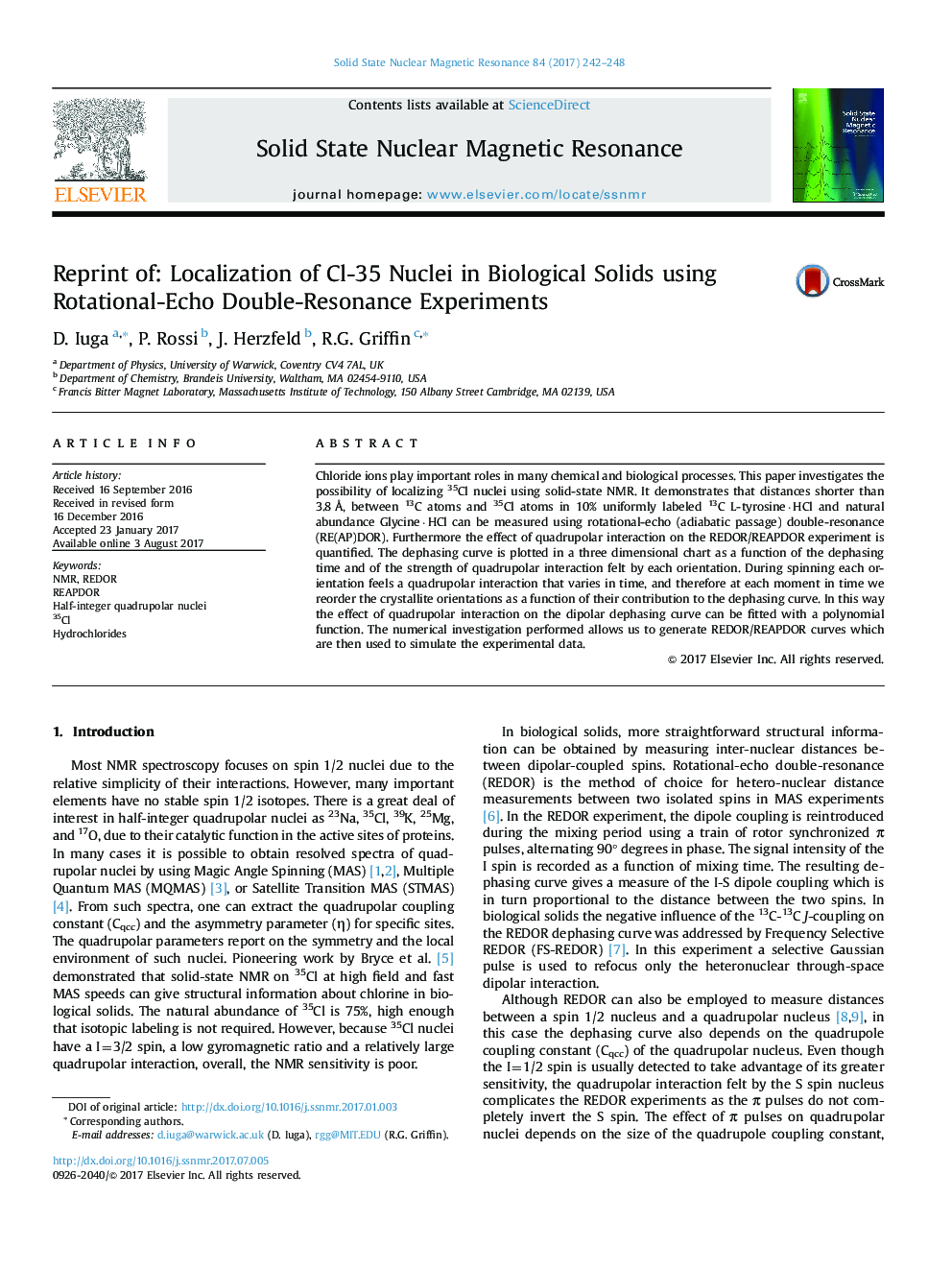| Article ID | Journal | Published Year | Pages | File Type |
|---|---|---|---|---|
| 5420213 | Solid State Nuclear Magnetic Resonance | 2017 | 7 Pages |
â¢Methodology to measure 13C-35Cl distances is presented and exemplified.â¢The effect of quadrupolar interaction on the REDOR measurements is quantified.â¢Examples of polynomial functions that fit 3D REDOR dephasing charts are given.
Chloride ions play important roles in many chemical and biological processes. This paper investigates the possibility of localizing 35Cl nuclei using solid-state NMR. It demonstrates that distances shorter than 3.8 à , between 13C atoms and 35Cl atoms in 10% uniformly labeled 13C L-tyrosine·HCl and natural abundance Glycine·HCl can be measured using rotational-echo (adiabatic passage) double-resonance (RE(AP)DOR). Furthermore the effect of quadrupolar interaction on the REDOR/REAPDOR experiment is quantified. The dephasing curve is plotted in a three dimensional chart as a function of the dephasing time and of the strength of quadrupolar interaction felt by each orientation. During spinning each orientation feels a quadrupolar interaction that varies in time, and therefore at each moment in time we reorder the crystallite orientations as a function of their contribution to the dephasing curve. In this way the effect of quadrupolar interaction on the dipolar dephasing curve can be fitted with a polynomial function. The numerical investigation performed allows us to generate REDOR/REAPDOR curves which are then used to simulate the experimental data.
Graphical abstractDownload high-res image (117KB)Download full-size image
